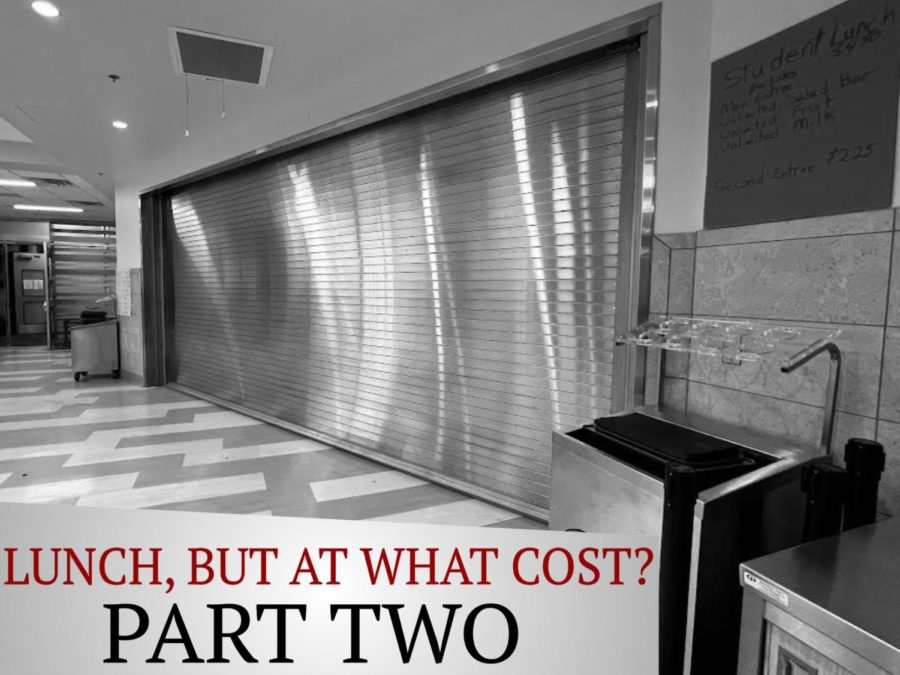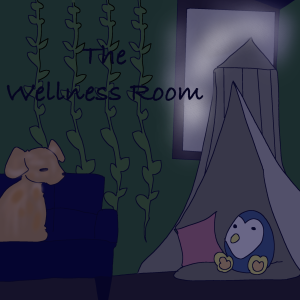Lunch, But at What Cost? (Part 2)
The school cafe, plagued by the exuberance that isn’t being open. That is, closed.
November 4, 2022
It’s obvious that within the student populace there’s some discontent with school lunches. In our previous article, we discussed the BVSD budget, how school funding works, and the cost to provide school lunches. If you haven’t yet, you should check out that article.
We wanted more insight and student opinion on the reasoning behind the 84% result on our poll on the publication’s instagram, so we conducted further student interviews.
“I’ve never really liked the school lunches, also I’m vegan so I can’t really eat that much of it,” said senior Katelyn Haid.
This, of course, brings up a whole new dilemma: some students can’t have school lunches, because they are vegan. There’s a consistent vegetarian option for BVSD school lunches, but not much in regards to a vegan choice.
Student advocates have been fighting for better vegan and vegetarian options for a while now, the school club called the Fairview Institute in particular. The club, which was deemed a ‘student think tank for researching and preparing solutions to wide-ranging issues’, pushed for vegan lunch options a while ago, but to little avail.
“There were a lot of other food policies that were going on… they were looking into the budget, so the main focus wasn’t on vegan [meal options]…Their focus was more on if lunch should be free or not, versus the food options” said Rose Maggio, one of the members of the Fairview Institute.
We brought up this topic in an interview with the director of BVSD food services, Stephen Menyhart, who mentioned how “Every lunch needs to have a protein and a grain in order to be a complete meal. The USDA only credits certain proteins towards that protein requirement, which historically have only been beans and cheese. For many years it was beans and cheese, and the reliance on cheese [in vegetarian meals] is probably a result of that.”
Not only have vegan options been limited due to government meal requirements, but vegetarian options were in a similar situation until recently.
“It was only, gosh, ten years ago that BVSD said we could even use tofu in vegetarian dishes, so it’s pretty wild how behind the times they are in terms of crediting a vegetarian option. Two years ago, they allowed tempeh to be created as an option, so they’re sometimes slow to the take on some of the items that are already currently in the marketplace.” said Mr. Menyhart on BVSD’s response time to the issue of vegan meals.
There are a variety of other reasons that BVSD hasn’t provided much in the way of vegan meals for students.
“Roughly, as far as the general population, vegans are about 2-3 percent, from what I’ve seen and know from research.” Menyhart added. “So, again, could it be slightly higher in Boulder County, yes, but we can’t offer an every day consistent vegan option and not have a lot of food waste, because of the fact that it’s only selected by very few students. So it’s a balancing act.”
Sacrifices have to be made to provide an entire district with food at a price that won’t bankrupt it, but this brings up a question: is the lunch quality in BVSD even high enough to justify these costs?
The price of a Mcdonald’s happy meal is around $3.76; food at King Soopers is usually within the range of five to seven dollars like the Boar’s Head ovengold provolone sandwich. The school is charging $4.50 for what some students feel to be poor-quality food., although this price can be justified when looking at the amount BVSD spends on food purchases, personnel to produce those foods, and other various expenses. BVSD’s per meal production cost is $4.35, with the school only making 15 cents of profit for each meal served.
At first glance, four dollars is a huge production cost for a meal. It costs McDonald’s roughly 80 cents to make a hamburger used in a happy meal, a far cry from the $4.35 production cost of BVSD’s food. With this in mind, another question comes up: why does it cost so much to produce food at BVSD? Well, we have a simple answer: Budgeting. . Companies like McDonald’s can mass produce their hamburgers in a factory with minimal cost. BVSD chooses to use its budget in different ways. According to Director Menyhart, BVSD spends 1.1 million dollars (roughly 25% of their food budget) buying locally. This benefits multiple parties, with local businesses earning profits and students receiving high-quality, homegrown produce, something BVSD food services stand for.
“We have multiple goals at multiple levels,” said Menyhart. “Our first goal is to feed the people, feed the children… making sure we have the logistics right so we can feed every child every day, make them happy…and very close behind that is food quality, making sure that every meal is appetizing, served at the right temperature… so that it’s really the best it can be, as fresh as it can be, and also really trying to focus on variety of fruits and vegetables so that not every kid just gets a pile of green beans on their plate, but so they have an extra choice of things that we currently offer, like Palisade peaches, watermelons, melons, you know. This Friday (September 9th at time of interview) we are getting a bunch of organic plums from the West, and honeycrisp apples, and we just try to provide an abundance of choice so that students can find something they like.”
School lunch is quite sanctioned, with strict regulations and requirements that make it hard to change anything about the way the system works. As a result, there haven’t been many changes over the years to accommodate various eating styles and choices. In our interviews with Rose Maggio and Director Stephen Menyhart, we’ve also learned about a non-profit organization called Hunger Free Colorado. This group is working to increase food options within schools, and has taken the matter up with the Colorado legislature itself. A bill is currently being put on the ballot for this November, which would give free lunches to all students in Colorado school districts. With voting season right around the corner, we’ll report more on this topic after the ballots are in.















